Giving form
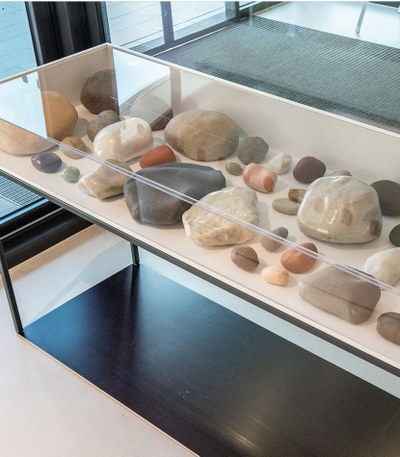
Hanne Lange makes what is difficult to imagine comprehensible and gives it a form. In a long showcase, she displays a conglomerate of about 40 objects, which in their shape and size are reminiscent of stones found in nature. Modeled in clay and porcelain, they are glazed and shiny after firing, or unglazed and matt.
The compact objects are displayed like archaeological finds or meteorites that have fallen from the sky in a scientific teaching collection. With them, Hanne Lange draws a connection to the latest imaging techniques, which can optimize the therapy of a tumor by determining its exact location. In the high-tech computer tomography and magnetic resonance tomography images or in intelligent computer simulations, however, the tumor appears as an abstracted visualization or mathematical calculation. A form of representation that is difficult to "grasp", especially for patients.
By lining up a multitude of objects that offer a variance of imaginable forms of possibility in their coloration, surface texture, size and scope, the sculptor succeeds in switching off for a moment the always resonating uncertainty factor of our imaginative faculties and in focusing us. Our eye settles on the gentle curves of the stone bodies, touches their rough surface, mentally cradles their weight in our hands. The initially alien thing becomes familiar to us, becomes part of our representational world, can be grasped and thus processed.
In nine delicate drawings with colored pencil and pencil on tracing paper, Hanne Lange transfers photographs from nuclear medicine, which are marked with colored markers for further therapies, into an abstract pictorial composition. Here, too, she is concerned with making the hidden visible and using graphic means to create a poetic reflection.
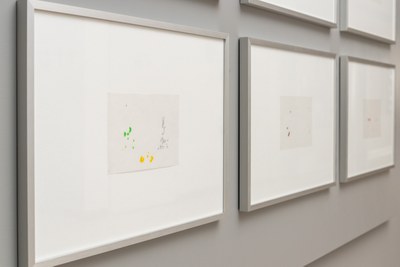
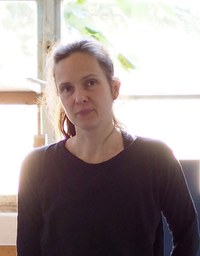
Hanne Lange (*1983 in Sebnitz, lives and works in Dresden)
The conceptual artist and sculptor was a master student of Prof. Martin Honert at the HfBK Dresden. She studied at the Dresden Academy under Prof. Carl Emanuel Wolff, Prof. Nicola Torke and Prof. Martin Honert. Lange received a working scholarship from the Cultural Foundation of the Free State of Saxony in 2023, and in 2020 she was in Rotterdam with scholarships from the Goethe-Institut and the City of Dresden.
Project partners:
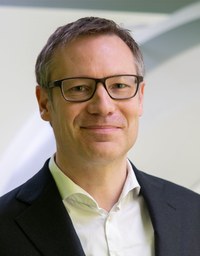
Prof. Matthias Miederer – State-of-the-art imaging for cancer therapy
Department of Translational Imaging in Oncology, NCT/UCC Dresden
Research into innovative imaging methods should enable even more targeted treatment tailored to the individual tumor in the future. For example, modern methods such as positron emission tomography (PET) can be used to monitor the course of a cancer very precisely. A central concern is to transfer new radiopharmaceuticals to patient application via clinical trials. These drugs, which are labeled with radionuclides (unstable and thus radioactive types of atoms), can not only detect cancer cells but also display therapy-relevant biological functions in tumor tissue.
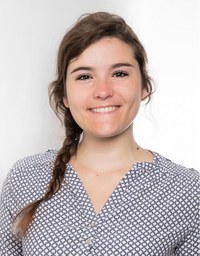
Bianca Güttner – Intelligent support tools for surgeons
Department of Translational Surgical Oncology, NCT/UCC Dresden
In the future, intelligent assistance systems will display hidden structures such as the tumor, blood vessels and nerve tracts or the optimal incision line in real time during minimally invasive surgery to help surgeons orient themselves on the endoscopic video. The development of such systems for operations in the abdominal cavity is new and particularly difficult, since tissues and organs are especially mobile here and constantly change their position and shape. The researchers are also working on assistance systems that warn of complications, estimate the remaining operating time or, with the help of a robotic arm, perform comparatively simple tasks such as guiding the operating camera. The techniques developed can also be used to provide automated feedback to medical students learning the necessary maneuvers in a training simulator.


